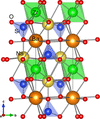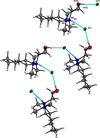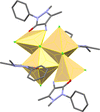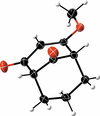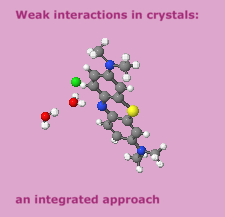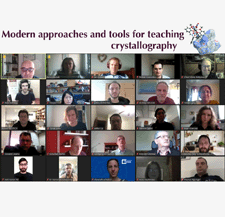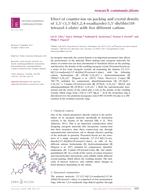issue contents
May 2025 issue
Early view articles
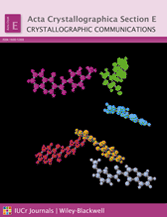
research communications
Download citation


Download citation


The extended structure features short halogen⋯oxygen contacts [Cl⋯O = 2.991 (3), Br⋯O = 3.139 (2) Å], forming molecular sheets lying parallel to (101).
CCDC reference: 2433444
Download citation


Download citation


The two title oxides are new isotypic silicates, crystallizing in the non-centrosymmetric space group P3. The crystal structures were analysed with two twin components in each case.
Download citation


Download citation


The synthesis and structural characterization of the crystal forms of (R,R)-TMCDA and its ethanol derivative, both doubly protonated with FeCl4− and Cl− as counter-ions, are reported. A notable feature across both synthesized compounds is the presence of N—H⋯Cl hydrogen bonds of moderate strength in the solid state. In the case of the ethanol derivative of (R,R)-TMCDA, the structure also reveals the formation of intermolecular O–H⋯Cl hydrogen bonds.
Download citation


Download citation


An Ni-based coordination polymer with a crystal structure reminiscent of bamboo has been synthesized, the Ni2+ ions exhibiting a slightly distorted octahedral coordination geometry with N atoms and O atoms.
CCDC reference: 2364669
Download citation


Download citation


In the crystal, O—H⋯O and N—H⋯O hydrogen bonds link the molecules, enclosing R22(16) and R22(24) ring motifs, to generate [110] chains. Very weak π–π stacking interactions between the phenyl rings of adjacent molecules help to consolidate a three-dimensional architecture.
CCDC reference: 2440877
Download citation


Download citation


The crystal structure of [(1S,5R)/(1R,5S)]-cis-metconazole at 100 K is presented along with a Hirshfeld surface analysis comparing the similarities of the atom–atom contacts involving the two independent molecules in the asymmetric unit.
CCDC reference: 2441232
Download citation


Download citation


In the crystal structure of the title compound, C15H15N3O2, O—H⋯O and N—H⋯O hydrogen bonds lead to the formation of layers extending parallel to (010).
CCDC reference: 2203541
Download citation


Download citation


A new tetranuclear cadmium(II) complex of 4-aminoantipyrine and chloride ions was synthesized using methanol as solvent. The complex possesses inversion symmetry with two independent Cd2+ ions that have different coordination spheres, one fivefold and the other sixfold. A new geometry index, τ6, is propossed to quantitatively describe the geometry of a sixfold coordinated atom.
CCDC reference: 2441688
Download citation


Download citation


Bis(diisopropylamino)fluoroborane was previously identified as a product of reactions of (diisopropylamino)difluoroboranes in the presence of Na/K alloy, but its structure was never elucidated. The structure reported here will contribute to the understanding of the basic binding situation and properties, and will provide a more complete picture when compared with analogous structures.
CCDC reference: 2441918
Download citation


Download citation


A set of novel bicyclo[3.3.1]nonanones were synthesized and structurally elucidated by NMR, HRMS and X-ray crystallography.

 journal menu
journal menu












